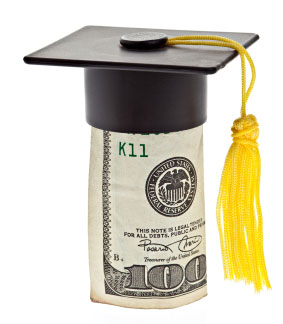President Obama called for colleges to rein in their costs during his State of the Union address Tuesday night. But new data shows those who attend schools with lower tuition often end up paying in other ways.
Students who go to the most affordable four-year public colleges are more likely to drop out and to fall behind on their student-loan payments, according to the “College Scorecard” that was released by the U.S. Department of Education today. The tool, first announced by Obama last night, breaks down colleges’ net costs (what families pay after factoring in grants and scholarships), graduation rates and student loan debt, and compares the figures nationally. All 10 of the four-year public colleges with the lowest net prices have a graduation rate that’s below the 58% national average. And student borrowers from half of these schools have a higher federal loan default rate than the 13.4% national average.
At a time when more families are becoming cost conscious about the college they choose, the findings suggest that cheaper isn’t always better. “Part of it is, you get what you pay for,” says Mark Kantrowitz, publisher of FinAid.org, which tracks financial aid and student debt.
In-state families at these schools pay average net prices ranging from roughly $1,400 to $4,000, according to Education Department data for the 2009-10 academic year, the latest available. Yet many of their students still fall behind on loan payments. Of the 10 schools on this list, Dalton State College, in Dalton, Ga., has the biggest default rate: 21.3 % of its student borrowers defaulted on federal student loans before Sept. 30, 2011, within three years of entering repayment, according to data from the College Scorecard. The school is tied with Indian River State College, in Fort Pierce, Fla., and followed by Edison State College in Fort Myers, Fla., at 20.1%.
Carol Jones, financial aid director at Dalton State College, says its borrowers have fallen behind on payments because the local economy has shed many jobs since the recession, making it harder for even its college graduates to find work. She adds that the school accepted most students who applied, and has recently raised its admissions standards. Indian River State and Edison State colleges didn’t immediately respond to requests for comment.
Some college experts say that the dismal figures are also due to the quality of education at lower-cost colleges. These schools are less likely to have the large support staff, including counselors and tutors, who can help students overcome academic or financial setbacks, says Kantrowitz. They’re also less likely to have as many full-time professors or other academics available on campus for students.
With fewer resources, there’s an increased chance of students dropping out. After Dalton State, California State University at Dominquez Hills has the second lowest graduation rate on the list of most affordable colleges, at 24.4%. (The data, which comes from the National Center for Education Statistics, looks at the number of first-time, full-time students beginning college in the fall of 2005, and assesses how many of them had graduated by 2011, six years later.) Susan Borrego, vice president for enrollment management and student affairs at CSU Dominguez Hills, says that to improve graduation rates, the school has been providing more support to students, including more academic advising and summer programs designed to improve study skills. But she says the school’s students — most of whom come from lower-income families — also impact its graduation rates.
In general, colleges with lower net costs tend to attract more lower-income students who are also more at risk for leaving school before graduation if their families suffer a financial setback. (According to FinAid.org, about a quarter of students at public colleges receive the Pell grant, a need-based federal grant, compared with roughly 10% of students at Ivy League schools — where graduation rates are near 100% and loan default rates are in the low single digits.) From there, a domino effect ensues: Dropouts are less likely to have the means to keep up with student loan payments, which in turn leads to a higher default rate for that institution.
For families, the College Scorecard data suggests that finding a middle ground may be the way to go. Families should review the financial aid packages they receive from colleges to pinpoint the ones that will require the least out-of-pocket costs and should then use this tool to see how those institutions’ students fare. They should also do legwork of their own, including visiting the campus and inquiring about their job placement rates. Last year, SmartMoney pinpointed the colleges that help their graduates to get the best salaries. (The Education Department is working on adding employment information in the Scorecard.)
Separately, advisers suggest families shouldn’t be quick to dismiss private colleges with higher sticker prices. Many have large endowments and bigger revenue streams than public colleges that they use to provide more services on campus and more free aid to students.







